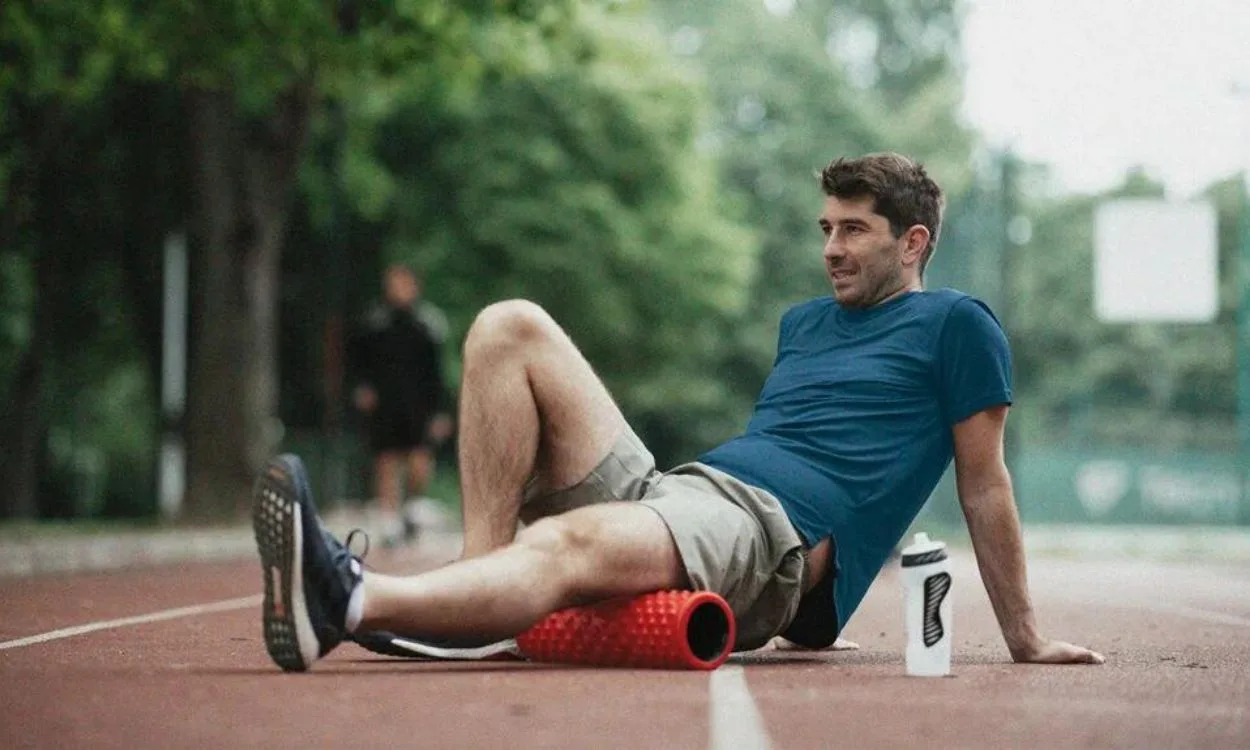The Benefits of Foam Rolling for Muscle Recovery and Injury Prevention in Athletes
As an athlete, you understand the importance of maintaining peak physical condition to achieve your performance goals. Whether you’re a professional athlete or a fitness enthusiast, muscle recovery and injury prevention are crucial aspects of your training regimen. One effective tool that has gained popularity in the athletic community for these purposes is foam rolling. Let’s delve into the science behind foam rolling and how it can benefit athletes, particularly in the context of the Indian population.
Understanding Foam Rolling
Foam rolling, also known as self-myofascial release, involves using a cylindrical piece of foam to apply pressure to specific points on the body. This technique targets the fascia, a connective tissue that surrounds muscles, blood vessels, and nerves. When the fascia becomes tight or restricted, it can limit muscle function, leading to decreased flexibility, mobility, and increased risk of injury.
Muscle Recovery Benefits
1. Increased Blood Flow
Foam rolling helps to stimulate blood flow to the muscles, which is essential for delivering oxygen and nutrients while removing metabolic waste products. This increased circulation can aid in the recovery process by reducing muscle soreness and promoting faster healing.
2. Improved Flexibility
By applying pressure to specific muscle groups, foam rolling can help release tension and adhesions within the muscles and fascia. This can lead to improved flexibility and range of motion, allowing athletes to move more efficiently and reduce the risk of overuse injuries.
3. Decreased Muscle Fatigue
Engaging in intense physical activity can lead to the accumulation of lactic acid and other metabolic byproducts in the muscles, contributing to fatigue. Foam rolling can help alleviate this fatigue by enhancing blood flow and reducing muscle tightness, supporting quicker recovery between training sessions.
Injury Prevention Benefits
1. Correcting Muscle Imbalances
Athletes often develop muscle imbalances due to repetitive movements or inadequate recovery. Foam rolling can target specific areas of tightness or weakness, promoting balanced muscle development and reducing the risk of overuse injuries.
2. Enhanced Joint Health
Maintaining healthy, mobile joints is crucial for athletes to perform at their best and avoid injuries. Foam rolling can help address tightness and restrictions around the joints, promoting proper movement patterns and reducing stress on the musculoskeletal system.
3. Pain Reduction
Regular foam rolling can help alleviate muscular pain and discomfort, particularly in areas prone to tightness or overuse. By addressing these areas proactively, athletes can mitigate the risk of developing chronic pain or more serious injuries.
Foam Rolling Techniques for Athletes
1. Quadriceps: Start by foam rolling the front of your thighs, applying pressure and rolling from the hips to just above the knees.
2. Hamstrings: Sit on the foam roller with your hands behind you for support, then roll from the base of your glutes to the back of your knees.
3. Calves: Place the foam roller under your calves and lift your hips off the ground, then roll from the back of your knees to your ankles.
4. IT Band: Lie on your side with the foam roller under your outer thigh, then roll from your hip to just above your knee.
The Fitpaa Advantage
While foam rolling is a valuable practice for athletes, it is just one component of a comprehensive approach to health and fitness. Fitpaa, a leading AI-driven metabolism monitoring and management technology, offers a holistic solution to help athletes achieve their health and fitness goals with guaranteed results. From personalized metabolism assessments to expert guidance and real-time monitoring, Fitpaa empowers athletes to optimize their performance and overall well-being.
Fitpaa’s Unique Approach
– Personalized Fitpaa Capsule: Tailored to individual metabolism, health goals, and lifestyle, the Fitpaa Capsule encompasses medical therapy, exercise therapy, nutrition therapy, and cognitive behavior therapy.
– Real-Time Guidance: Leveraging cognitive behavioral therapy principles, Fitpaa provides timely nudges and habit-building support to ensure consistent progress.
– Comprehensive Support: With a team of fitness planners, nutritionists, trainers, and doctors, Fitpaa offers ongoing consultations and reviews to keep athletes on track towards their goals.
By integrating foam rolling into a comprehensive fitness plan with Fitpaa, athletes can maximize their recovery, minimize the risk of injuries, and elevate their performance to new heights.
Conclusion
Foam rolling is a valuable practice for athletes seeking to enhance muscle recovery and prevent injuries. By incorporating this technique into their training routines, athletes can experience improved flexibility, reduced muscle fatigue, and a decreased risk of overuse injuries. When combined with a holistic solution like Fitpaa, athletes can elevate their performance and achieve their health and fitness goals with confidence and guaranteed results.
Experience the transformative power of Fitpaa and take your athletic performance to the next level. Download the Fitpaa app today and embark on a journey towards a healthier, fitter, and more resilient you. Your well-being is our mission, and we are committed to helping you achieve your goals with unwavering support and expertise. Embrace the Fitpaa advantage and unlock your full potential as an athlete.









